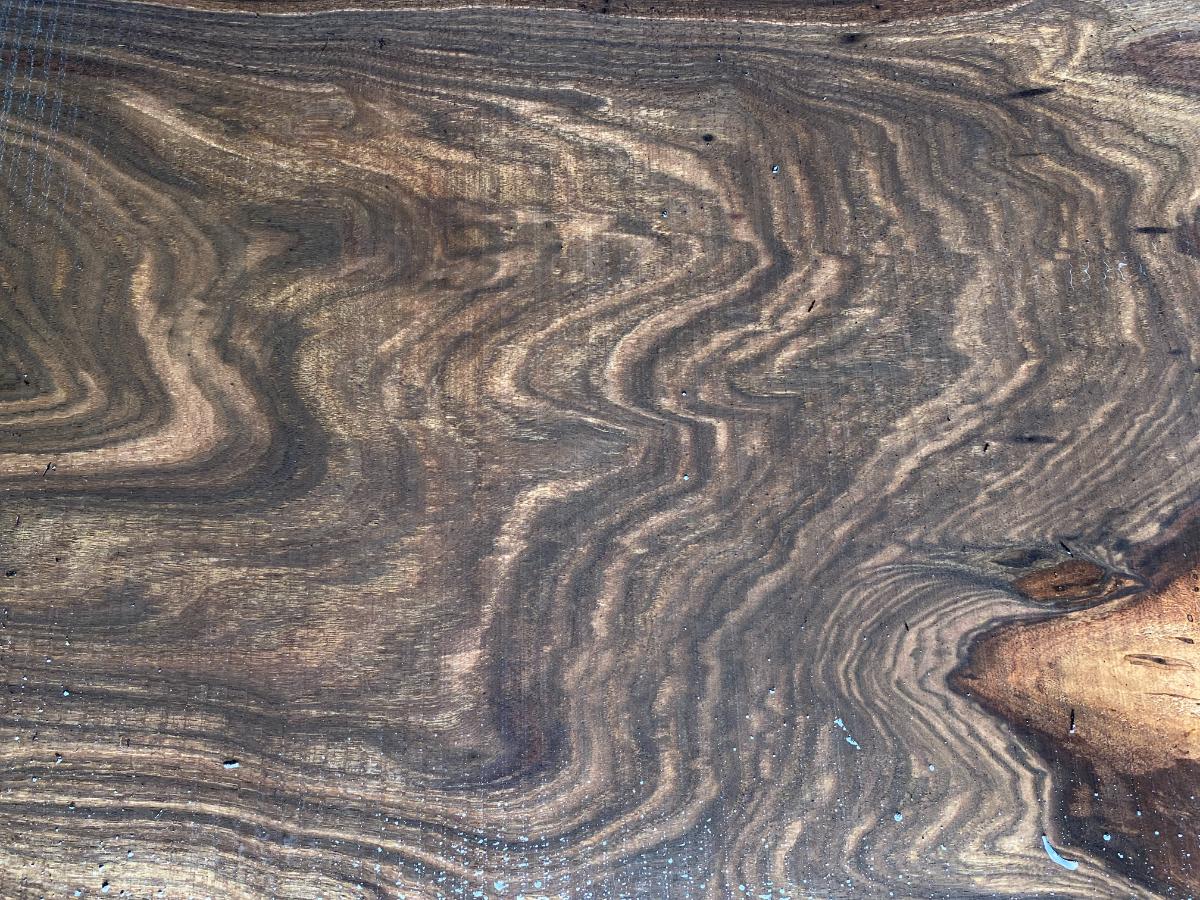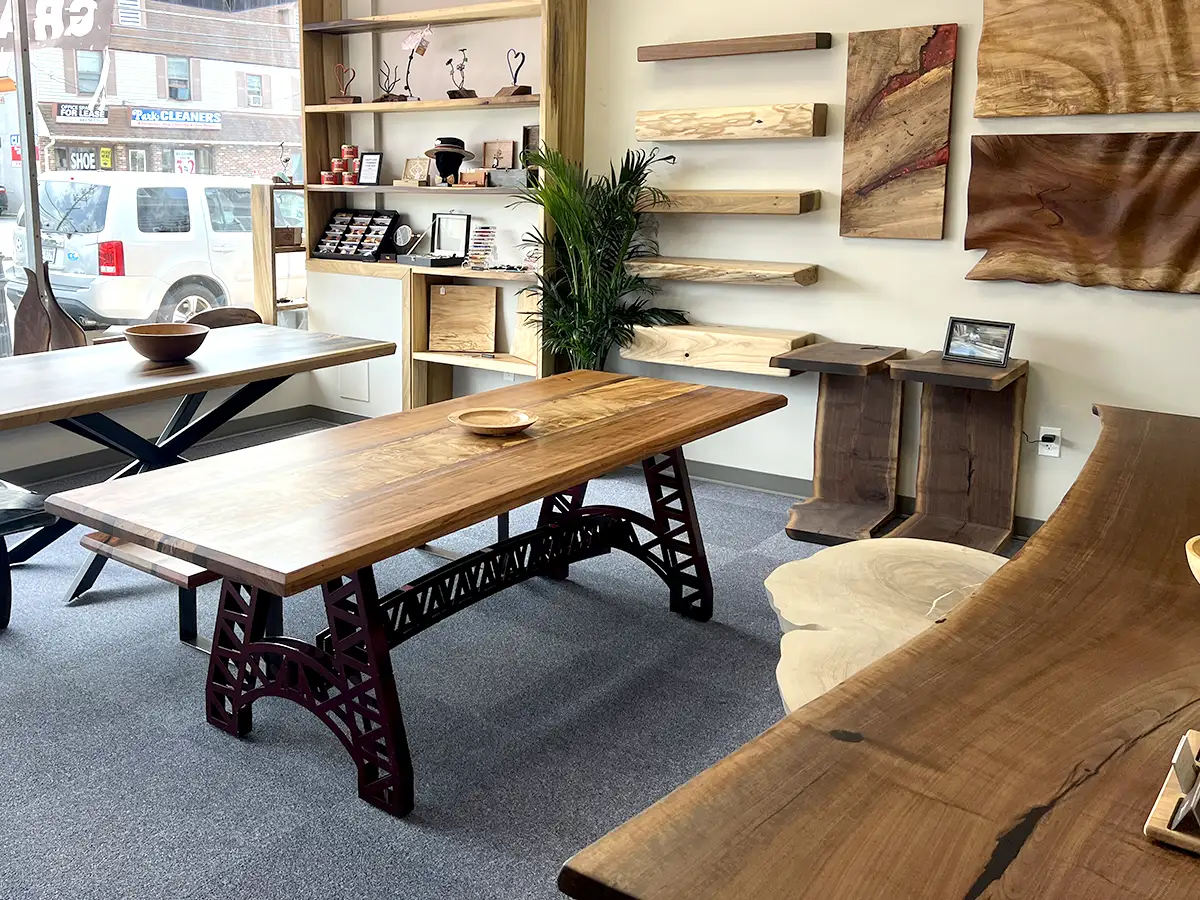Black Walnut wood
Black Walnut Wood

Characteristics Of Black Walnut
- Domestic hardwood lumber used for furniture, accents, turning, inlays
- Dark color with lighter brown in the sap wood
- Excellent wood for bar tops, pens, rifle stocks
Also Know As:
Juglans nigra

Characteristics of Black Walnut
- Color: Rich, deep chocolate brown heartwood with purplish or gray undertones; sapwood is pale yellow-gray to nearly white. It darkens over time with exposure to air and light.
- Grain: Generally straight, though it can exhibit curly, wavy, or figured patterns. The texture is fine and uniform, with a natural luster.
- Density: Moderately heavy (about 38–40 lbs/ft³); heavier than ash or maple, lighter than some tropical hardwoods.
Mechanical Properties:
- Hardness: Janka rating around 1,010 lbf — durable enough for furniture and cabinetry but softer than oak or ash.
- Workability: Excellent. Machines, sands, and finishes beautifully. Cuts cleanly and holds edges well. Easy to glue and screw, though pre-drilling is recommended.
- Stability: Very stable after drying; holds shape with minimal movement.
- Carving Quality: Exceptional for carving and turning, making it popular for fine woodworking.
⸻
Common Uses:
- Fine Furniture: Dining tables, dressers, bed frames, and cabinetry.
- Architectural Woodwork: Paneling, moldings, and custom millwork.
- Gunstocks: Chosen for strength, beauty, and shock resistance.
- Flooring: Though not as hard as hickory or oak, it’s still used for high-end floors.
- Musical Instruments: Often used for stringed instrument backs and sides.
- Artisan Products: Bowls, cutting boards, gun grips, and premium pens.
About The black walnut Species
Of all the dark species, black walnut is the most popular. Native to North America, it grows up to 150ft tall and can live up to 250 years. It is also known by the names of American Black Walnut and American Walnut. It’s wood is dark, hard, dense and tight-grained, and is valued for its strength, grain and beautiful color. It polishes to a very smooth finish, and the color ranges from creamy white in the sapwood to a dark chocolate in the heartwood. Some may also contain lighter browns, purples, grays, or reddish tints. Unlike cherry, maple, and oak (which all darken in color as they age), walnut wood will actually lighten slightly over time.
Contact Us
Business Hours
- Mon-Fri: 9AM-5PM
-
Sat 10:30am-3pm
Sun: Closed
Quick Note:
If you plan to visit makers wood shop to view live edge boards, we ask you to call ahead and provide a list of boards you want to view. Then, we will arrange an appointment and have the selected slabs ready to be viewed. We look forward to showing you our selection!
Drop Us A Line to Receive A Quote
"*" indicates required fields

